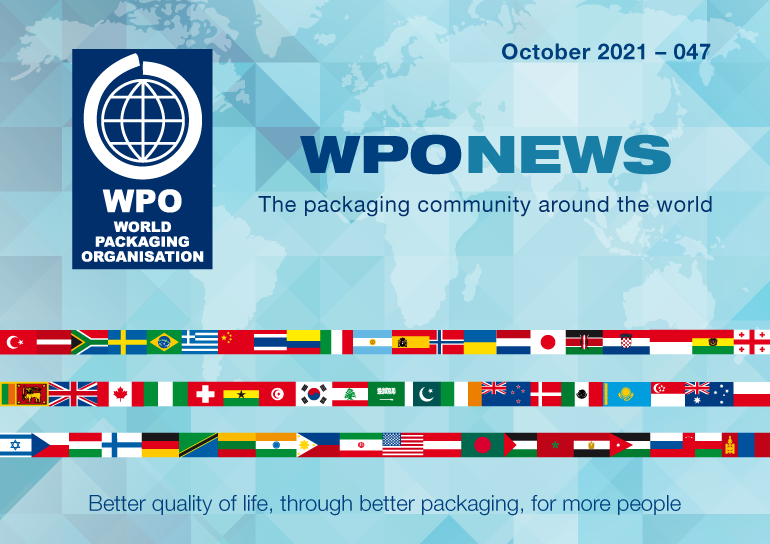|
President’s Word
We are definitely in the right industry!
Pierre Pienaar*
 We are fast approaching 2 years into the
pandemic and the packaging industry remains in the spotlight as we continue to search
for innovative solutions to sustainable packaging and e-commerce design
demands. Across the world the human spirit has been amazing as we find ways to re-establish
the industry to a new normal. We are fast approaching 2 years into the
pandemic and the packaging industry remains in the spotlight as we continue to search
for innovative solutions to sustainable packaging and e-commerce design
demands. Across the world the human spirit has been amazing as we find ways to re-establish
the industry to a new normal.
The pace of global change is increasing,
creating uncertainty about the consumer preferences and behaviours that will
affect the future of the packaging industry.
Here are some recent developments:
- There is a need for new and recycling and
processing technologies, that can be commercialised, implemented, and promoted,
if sustainability requirements are going to be met.
- We will continue to see shifts in our
industry and it will mean that companies, brands, manufacturers, and retailers need
to adapt to this ever-changing landscape over the coming year.
- There will be a need for packaging
manufacturers and brands to develop and commercialise recyclable package
innovations although in many cases the capabilities to recycle them do not yet
exist.
- There is talk that sustainable packaging
will be superseded by ‘responsible’ packaging, thus taking a more practical
approach where brands can promote, and consumers can understand and act upon.
- There is more pressure on non-recyclable
plastics packaging consumption which hopefully will result in more easily
recyclable and sustainable packaging materials such as recycled PET as well as paper
and board, not forgetting a reduction in excessive secondary packaging.
- Rising real incomes in Asia and other
developing regions will see more spending on packaged products, including food,
luxury products and cosmetics.
- Flexible packaging to replace traditional
packaging, where high-barrier films and retort stand-up pouches will replace
rigid pack formats, such as metal tins and glass jars, for a wide range of food
products.
- Consumer demand for convenience in food
should show an increase in consumption of microwavable ready meals, more
portable packaging, packaging for on-the-go consumption, and convenience
features, such as easy-open and reseal components.
The packaging industry continues to grow at
an alarming rate across the world. Smithers recently released their forecasts predicting
that the global packaging market is to reach $1.05 trillion in 2024. We
certainly are in the right industry for growth but at the same time we need to
be mindful that the packaging produced must align with, as well as meet, the global
sustainable guidelines.
The WPO along with ECR Community (Efficient
Consumer Response) in Europe, has just released (4 October 2021) a Global Circular
Packaging Guide. This will certainly assist all countries to meet their
packaging obligations in the sustainability world.
My thoughts are with those affected by the
virus around the globe. On behalf of all at the WPO, I wish you, good health
and safety. Take care and best wishes.
*Pierre Pienaar is President of WPO
 [email protected] [email protected]
 WPO – World Packaging Organization
WPO – World Packaging Organization
 pienaarpierre
pienaarpierre
 @WorldPackOrg1
@WorldPackOrg1
From the Editor
Responsibility is the next sustainability
By Liliam Benzi*
With these words - Responsibility is the next sustainability
- David Luttenberger, from Mintel's Packaging Trends team, opened the
presentation of a sustainability report in Latin America. According to him, to
change 'sustainability' for 'responsibility' - and therefore 'sustainable' for
'responsible' and 'sustainable packaging' for 'responsible packaging' - is
justified because the term sustainability has been overused and used
incorrectly to the point that final consumer is questioning its credibility.
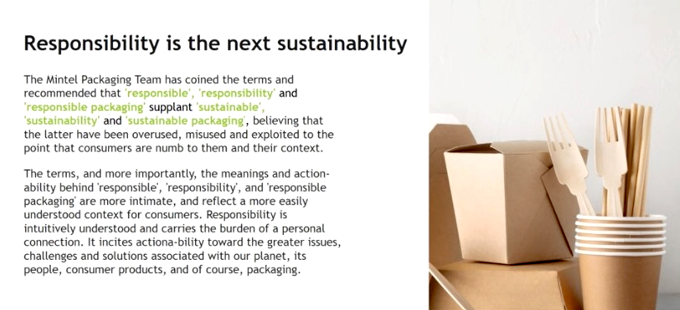
In addition, the consumer tends to understand more clearly
what it means to be responsible; the concepts contained in sustainability end
up generating some confusion. And, unfortunately, some companies do not
contribute to dispel these doubts; on the contrary, they create a smokescreen
with the term, 'marketing' it.
Another important point is that today, consumer values
'small actions' more than 'big claims'. So, instead of trying to impact the
consumer in a meteoric way, genuine changes towards sustainability of brands,
products, and packaging, must be reflected in concrete and easily perceptible
results.
Mintel's experts agree that consumers have no intention of
eliminating packaging; what they expect is access to environmentally, socially,
and economically optimized packaging. And the companies that, in addition to
this real optimization, manage to create empathy with the consumer, via
packaging, showing that the product and the brand are really there to help them,
will come out ahead. On this same trajectory passes the consumers education process.
Another relevant point raised in Mintel's survey is that
consumers are seeing more clearly the relationship between climate change and
their purchasing options. In Brazil, for example, 77% of consumers agree that
climate change will have effects on the food and beverages they consume. With
this, they will increasingly seek to be more responsible and buy brands aligned
with this purpose of responsibility.
Going a bit further, it was clear that consumers find it
cool that companies show respect for the environment. But the question at the
end of the day is: what are you really doing to help me be a more responsible
consumer? As said, the consumer wants to turn sustainable into something
'action-able' and personal.
At this point, comes the concept of 'carbon handprint', in
allusion to the 'carbon footprint', which definitely has a more personal
footprint. While responsibility is a more intuitive concept for consumers, the
'carbon handprint' is related to actions where the consumer can evaluate the
footprint of the goods and services he buys and uses. It is the company - and
the packaging - helping them to become more responsible and thus more
sustainable.
In the LATAM universe, Brazilian consumers are years ahead
on truly sustainable demands. Mintel research shows that they simply won't
commit to quality or familiarity with sustainability; they expect concrete action.
As the three big topics of this new responsibility, Mintel suggests:
- responsibility/sustainability is not an all or nothing
proposition;
- packaging is not the enemy;
- it takes empathy and education to make a real difference.
It is also positive to realize that even during the
pandemic, the environmental issue remained alive in the consumer's mind, and I
dare say that in many cases it became more alive since people had more time and
more information to think about it.
And this thinking comes in handy with the legislation and
recycling labels that are popping up more and more in Latin America and that
draw attention to the disposal of packaging. In tow comes an avid consumer for
eco-friendly packaging, but again, they really need to understand
what this means and they don't want to feel lost amidst far-fetched concepts
and terminology.
About being recyclable or having recycled content, Mintel
research indicates that the idea of recyclable is more aligned with current
consumer expectations of helping the environment. If this is the case and you
work with recycled content, make it clear, as much as possible, that recycled
content does not mean, necessarily, being recyclable.
People react - and believe - what they see, so it is up to
companies to prove what they are doing. Here arises the principle of 'show and
tell' design - show from a beautiful design but explain, so that the consumer
can understand, and use icons that are consolidated and endorsed by recognized
bodies known by this consumer.
We definitely live in an era where conscious consumerism
will dictate the new rules and where an 'eco responsible' packaging will be
protagonist as long as it is equally accessible and fits in the budget. A
tangible packaging in all senses.
For companies, here's a tip: simplify your speech, present
clear metrics, and prove that there is a positive personal impact on your
products, packaging, and branding!

*Liliam Benzi is WPO Press & Communication Liaison
Officer and runs its own Communication & Strategy company for the packaging
industry, LDB Comunicação Empresarial.
 [email protected] [email protected]
 (+ 55 11) 99989-1597 (+ 55 11) 99989-1597
 liliambenzi liliambenzi
 liliam-benzi-870b771a liliam-benzi-870b771a
 Liliam Benzi Liliam Benzi
Message from General Secretary
We will meet again soon!
Writing this article, I’m still a bit enthusiastic:
I’ve been to a trade show last week. About packaging. In Germany. With real people,
having real discussions. Meeting nice friends from Europe, having coffee with
them. A stage program with at least half of the speakers doing live
presentations (Nerida: Ok, Australia was too far away, but very good to have
you there virtually!).
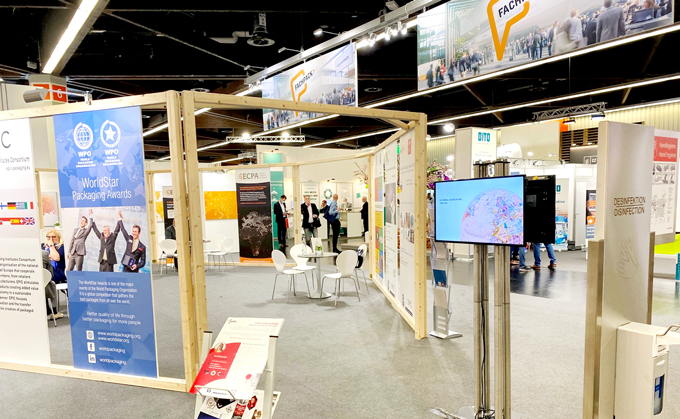
I’m talking about Fachpack
(www.fachpack.de/en), the packaging show of NürnbergMesse. Smaller than in
other years, for sure, but very crowded. They were running a detailed hygiene
concept to fight Covid (vaccination, testing, masks, distance, and comprehensive
online tools). Nobody knew in the days before the show, but it was a big
success. I can’t describe that feeling of absolute happiness for me as
participant. WPO joined the EPIC area there and we organized a presentation
slot on stage.
What I want to say: we will meet again, in
person, in a near day! It’s necessary and it will be good!
Meanwhile, according to the actual
Covid19-Situation our WPO Board Meeting in November 2021 will be held virtual
again. The WPO Meeting program will start on Monday, 22nd of November with the
Executive Meeting (restricted to the executive members of WPO only). On
Tuesday, 23rd of November, you are invited to take part in our parallel working
group meetings and a webinar on packaging recycling in Indonesia and our new
guideline for recycling. The World Star Judging will be done on Wednesday, 24th
of November. Our crowning finale on Thursday, 25th November will be the WPO
Board Meeting.
Soon, you will get the invitation by email
with all the links and agendas of the meetings. Please prepare properly for the
meetings, as our time there will be limited again, as in the last virtual
sessions. But I guess, we are all experts meanwhile in doing it that (zoom)
way!
One important thing to mention left: since
mid of September, Tanja is on her maternity leaf. All runs well for her
personally so far (and I won’t make jokes about that big, special pack she has
to deliver soon …). The handover process to Ulla run well and she is handling
the WPO Secretariat like a long time professional. It’s time to get to know her
a bit better. Ulla, your stage:
“Hello everyone, I am 24 years old and I'm
originally from Bavaria, but now I've fallen in love with beautiful Vienna and
the good coffee. I am really looking forward to the new tasks and even more
when we, hopefully, can all meet in person. If you have
any questions or problems, please feel free to contact me.”
Thx, Ulla! So, if you have any questions
about the upcoming meeting or anything else, just contact us via any channel
you prefer! Otherwise, see you soon at our meetings in November!
Ulla Hruschka & Barbara Zottl
WPO Secretariat
[email protected]
Johannes Bergmair
WPO General Secretary
[email protected]
Around the World
Competition for the best packaging in Ukraine
In April 2021, competitions for the best packaging and label
were held in Ukraine, organized by local WPO member, the Club Packagers of
Ukraine (www.upakjour.com.ua or www.packinfo.com.ua). 47 samples, from 23 Ukrainian companies,
representing 10 cities, took part in the competitions.
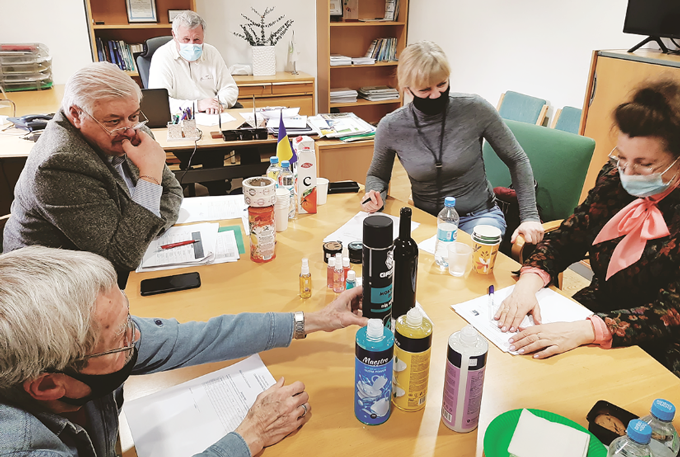
The jury consisted of well-known experts in Ukraine and
abroad, headed by Valery Krivoshey, Honorary President of the Club Packagers of
Ukraine. 23 packages were awarded with the ‘Ukrainian Packaging Star’ and 4
labels were winners of the ‘Ukrainian Label’.
At the same time, it was held a competition among young
designers, the ‘Packaging of the Future’ with the participation of 45 packages
and labels, presented by students from 9 academies. The first 03 places were:
Zoryana Ostapets, Luka Shavdatuashvili and Polina Makarenkova, students of the
National Academy of Fine Arts and Architecture. They are all students of
Professor Vitaly Shostya.
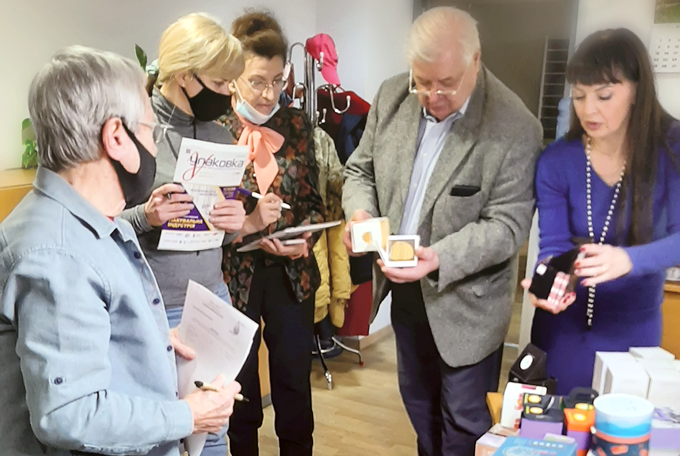
The competition was supported by Flexores, Geidelberg,
UkrPEC and the Union of Designers of Ukraine. The awarding of the winners took
place on June 3, 2021. An all winners are eligible to WorldStar, WPO global
packaging competition.
For more information, contact Veronika Khalaydzhi ,
President Club Packagers of Ukraine by e-mail [email protected].
In Spain, Liderpack awards is on!
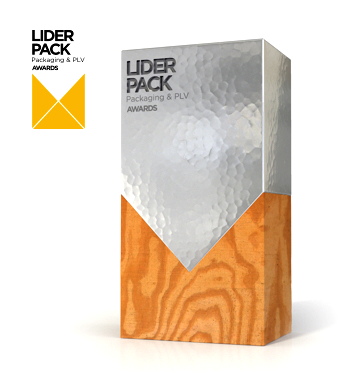 Organised by WPO member, Graphispack Asociación (www.graphispack.org) and Fira de Barcelona's
Hispack trade fair, the Liderpack awards are the most important prizes awarded
in Spain in packaging and POS material. The local packaging industry joins
more than 2,100 companies that employ 74,000 workers. Organised by WPO member, Graphispack Asociación (www.graphispack.org) and Fira de Barcelona's
Hispack trade fair, the Liderpack awards are the most important prizes awarded
in Spain in packaging and POS material. The local packaging industry joins
more than 2,100 companies that employ 74,000 workers.
Annually the award promotes and recognises the innovation
and creativity of these companies and professionals. The jury is formed by
professionals and experts from various areas such as packaging, POS, design,
logistics, marketing and advertising compose the jury.
The Liderpack 2021 award ceremony will take place during
Hispack on May 2022 at Fira de Barcelona's Gran Via venue.
For more information, contact Vanesa Armijo, Commercial and
Events Director of Asociación Graphispack by e-mail [email protected].
WPO presents at the Brazilian Packaging Congress
WPO supported the Brazilian Packaging Congress, organized by
its local member, ABRE (Brazilian Packaging Association – www.abre.org.br) that brought together packaging companies,
businessmen from the consumer goods and digital retail industries, and experts
from the international scene to debate the transformation of the consumer
market, consumer, and dynamics of retail and its reflexes for the brands and
the packaging industry.
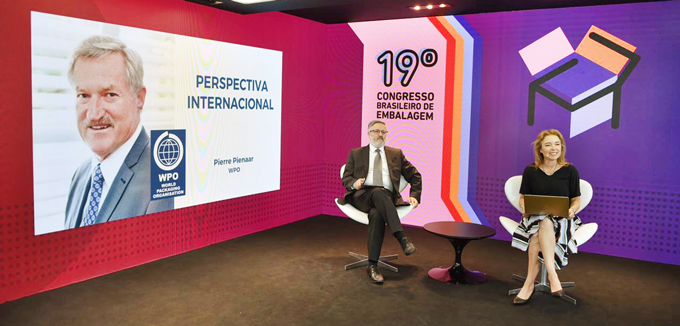
Based on the central theme “The role of packaging in the new
challenges for Brands”, the Congress aimed to promote the discussion about new
perspectives of competitiveness and construction of value in the consumer
market, placing the future at the center of business, discussing the
transformations and its consequences for the entire packaging and consumer
goods chain.
On a global level, this edition counted with the support of
the WPO and one of its members, the Argentinian Institute of Packaging (IAE – www.packaging.com.ar). Among the keynote speakers, Pierre
Pienaar, President of WPO, delivered the opening speech.
Packaging as part of the Milan Design Week
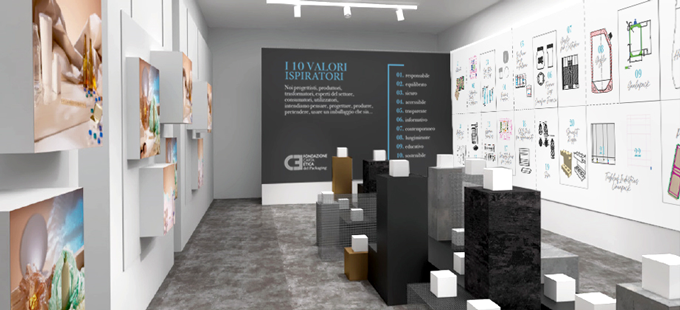
For the occasion of the Milan Design Week (Sept 04-10), the
Italian Packaging Institute (www.institutoimballaggio.org),
a WPO member and promoter of the Best Packaging contest as a program of the
Ethical Packaging Charter Foundation (www.fondazionecartaeticapackaging.org),
organized a show that intended to lead the world of packaging design and
business, through a dialogue between ethics and technological innovation.
The heart of the project was the interpretation of the 10
values of the Packaging Ethical Charter: responsible, balanced,
safe, accessible, transparent, informative, up-to-date, forward-looking,
educational and sustainable. Each of the 27 finalists competing for the Best
Packaging 2021 award designed their own packaging by finding inspiration in the
10 values.
The exhibition concept was an imaginary dialogue between the
storytelling of the 10 values, by the shots of the photographer Claudio
Bonoldi, and the finalist projects of the Best Packaging 2021 contest. The
visitor was led inside a path, made of suggestions and objects representing
daily life. The exhibition also aimed to show the design steps of the packaging
solutions.
The result was a synthesis between the ideal and the real;
the desire to achieve a hypothetical perfection and the needs of safety,
hygiene, protection, transport, communication and service that packaging should
provide.
According to Anna Paola Cavanna, President of the Italian
Packaging Institute and the Ethical Packaging Charter Foundation, “packaging is
an essential part essential of our life and allow us to enjoy goods and
services. And it is also always under close observation, for the legislation,
for the aspects of sustainability that cannot be postponed, and for the
continuous solicitations of the market and consumers. The excellent result of
this contest is an example of how companies are ready to respond to new
challenges, especially in terms of eco-design. We understand that companies
need precise guidelines for a clear and complete communication with citizens."
AIP releases ‘Sustainable Packaging Design Case Studies’ for
the industry

WPO member in Australia, AIP (Australian Institute of
Packaging – www.aipack.com.au) is pleased to announce the
development of a series of Best Practice Award-winning examples of innovative
Sustainable Packaging Design from across Australia and New Zealand.
All of the case studies have been recognised in the annual
Australasian Packaging Innovation & Design (PIDA) Awards and over 95% have
gone on to receive global recognition for their innovative Sustainable Packaging
Designs through the WorldStar Packaging Awards. Some of the ANZ winners have
also received this global packaging award organized by WPO.
The AIP Sustainable Packaging Design Case Studies are
available at http://aipack.com.au/pida-awards-sustainable-packaging-case-studies/.
 Marina Altayó is the new President of Graphispack Marina Altayó is the new President of Graphispack
On June 21th, the virtual Ordinary General Assembly of the
Graphispack Association, WPO member in Spain, elected Marina Altayó, Sales
Director Southern Europe at XSYS Global/Flint Group Iberia, as President. The
new Board is formed by: Marina Altayó (President), Javier Riera-Marsá (Vice
President), Jordi Quera (Vice President), Carlos Aguilar (Treasurer) and Manuel
Julián (Secretary).
The new president of the Spanish Packaging Association, also elected in this occasion, is Julio Berdún from Markem Imaje.
For more information, contact Vanesa Armijo, Commercial and
Events Director of Asociación Graphispack by e-mail [email protected].
AIP representative on newly-formed ANZPAC Collective Action
Group (ACAG)
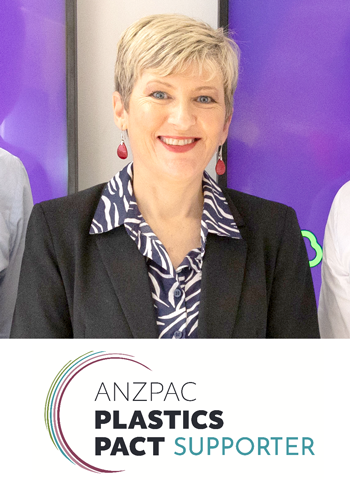 The Australian Institute of Packaging (AIP – www.aipack.com.au), a WPO member, is pleased to announce that
the Institute has a representative on the ANZPAC Plastics Pact newly-formed
Collective Action Group (ACAG), Nicole T Garofano. The Australian Institute of Packaging (AIP – www.aipack.com.au), a WPO member, is pleased to announce that
the Institute has a representative on the ANZPAC Plastics Pact newly-formed
Collective Action Group (ACAG), Nicole T Garofano.
The ANZPAC Plastics Pact (ANZPAC) is a collaborative
solution that brings together key players behind a shared vision of a circular
economy for plastic, where plastic never becomes waste or pollution.
Together through shared knowledge, investment and industry
led innovation the purpose is to implement solutions tailored to Australia, New
Zealand and the Pacific Islands region.
ANZPAC is the first in the Oceania region and second
regional Plastics Pact to become part of the Ellen MacArthur Foundation’s
global Plastics Pact network, with Pacts in Africa, Europe, Latin America and
North America. As an international challenge, Plastics Pacts address the
transnational nature of the issues related to managing plastic by providing a
consistent approach for global supply chains dealing with plastic waste
travelling across our borders, moving from a linear approach to a circular
economy for plastic, in which it never becomes waste or pollution.
"Being accepted as a member of the ANZPAC Collective
Action Group (ACAG) as a representative of the AIP for Australia and New
Zealand is such a privilege and a thrill”, states Nicole T Garofano. And adds:
“This opportunity extends my commitment to create change in the way plastic
packaging is generated and managed in the ANZPAC region. My goal is that
through AIP representation on the ACAG, members’ expertise can be shared to
support the achievement of Pact targets. The collaborative value of being part
of the ANZPAC Plastics Pact will also become evident. Having AIP on the ACAG
invites industry innovation to support the ANZPAC value chain to further the
achievement of a circular economy for packaging in this region.”.
For more information on the ANZPAC Plastics Pact visit www.anzpacplasticspact.org.au.
From the Board
WPO recognised the ‘International Day of
Awareness of Food Loss and Waste’ on 29 September
The ‘International Day of Awareness of Food
Loss and Waste’ was designed to make a clear call to action for both the public
and private sectors to prioritise actions and move ahead with innovation to
reduce food loss and waste.
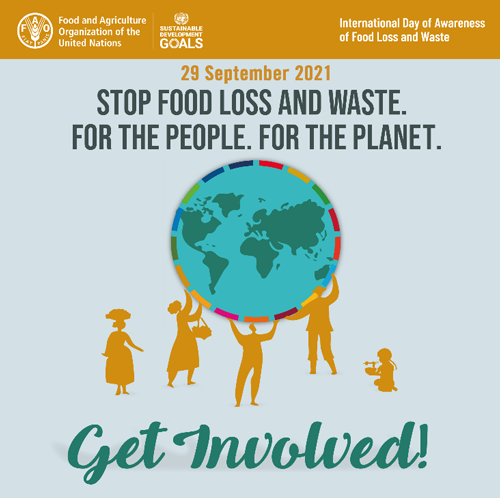
“It is known that 1/3 of all food produced
in the world is wasted and when food is lost or wasted, all the resources that
were used to produce this food - including water, land, energy, labour and
capital - go to waste. Environmentally food that is lost or wasted is
responsible for 8% of global greenhouse gas emissions. If food waste were a
country, it would be the third largest GHG emitter behind the USA and China”,
explains Pierre Pienaar, WPO President. According to him, “packaging can play
an integral role in minimising food waste at the start of the value chain so
that waste can be prevented in the households”.
“Avoiding food waste is a critical
packaging issue and one that food producers, manufacturers, brand owners,
retailers and consumers need to better understand. Without adequate intuitive
packaging design features and fit-for-purpose packaging, food can potentially
be wasted all the way through the supply chain to the consumer. By modifying
packaging designs and ensuring that Save Food Packaging Guidelines are followed
food waste and loss can be minimised and/or prevented”, completes Nerida
Kelton, WPO Vice President Sustainability & Save Food.
Both WPO Executives agree that the most
innovative and intuitive Save Food Packaging uses design features that can
contain & protect, preserve, extend shelf life, easily open and reseal,
provide consumer convenience and portion control; all the while meeting global
sustainable packaging targets.
Opportunities for packaging design to
minimise food waste can include better facilitation or communication around
portion control, date labelling, extension of shelf life, protection,
resealability and openability, serving size, food safety/freshness information,
information on storage options and improved communication on packs.
WPO has been working on the issue of Food
Waste and the role that packaging plays for many years now and as the
organisation developed a special award category for innovative and intuitive
‘Save Food Packaging Design’ in the annual WorldStar Packaging Awards. As Nerida
Kelton explains: “The Packaging that Saves Food Special Award is designed to
raise the profile of the critical role of packaging to reduce food waste and
therefore reduce product’s overall environmental impact and recognises
companies that are developing innovative and sustainable packaging that
minimises food losses and food waste, extends shelf life and improves the
supply of food. The WPO encourage all businesses to consider entering this
award category to help showcase Best Practice Save Food Packaging Design across
the globe.”
How to be part of the ‘International Day of
Awareness of Food Loss and Waste’ initiative?
“Begin in your own home”, advises Pierre
Pienaar, WPO President. To help with this, WPO has provided some ideas and tips
on how to minimise food waste at home.
- Learn the difference between A Use By date
and a Best before Date. Share this knowledge with your workplace, friends and
family
- Buy smaller packs that suit your household
numbers
- Plan Ahead and only buy what you need
- Don’t cook more than you need
- Buy resealable packaging
- Buy Freezer ready meals
- Look at innovative ways to use leftovers in
more meals
- Store Food in the right places e.g.:
freezer vs refrigerator vs room temperature
- Set your refrigerator to the correct
temperature
- ALWAYS donate extra food to neighbours,
friends or foodbanks
- Compost your food waste
- Get some chickens
- Nominate a few Meat Free Days during the
week
- Let the WPO know what steps you have made
to help minimise food waste in your home, work and extended family.
- Spread the message on social media #FLWDay
#reducingfoodlossandwaste #stopfoodwaste #savefoodpackaging
#worldpackagingorganisation
WPO prepared a special edition of ‘World
Pack Talk Show’, with Nerida Kelton, interviewed by Liliam Benzi, about the ‘International Day of Awareness of Food Loss and
Waste’. Access it at WPO YouTube
https://www.youtube.com/watch?v=IDfMju4EGzA&list=PLk84A5sL-GlEWGdKz0NQCppMNT-kOTgQ4&index=1
From the Market
Did you know that intuitive packaging can minimise
food waste?
The most innovative and intuitive Save Food
Packaging uses design features that can contain & protect, preserve, extend
shelf life, easily open and reseal, provide consumer convenience and portion
control; all the while meeting global sustainable packaging targets.
Opportunities for packaging design to
minimise food waste can include better facilitation or communication around
portion control, date labelling, extension of shelf life, protection,
resealability and openability, serving size, food safety/freshness information,
information on storage options and improved communication on packs.
Two stand out packs that were recently recognised
in the 2021 Save Food Packaging Design category, in the PIDA awards, organized
by WPO member Australian Institute of Packaging (AIP – www.aipack.com.au), were Junee Lamb for Agriculture and Edgell
Supa Crunch for Food Service.
Junee Lamb (Junee Lamb and Sealed Air for
CRYOVAC brand Total Bone Guard)
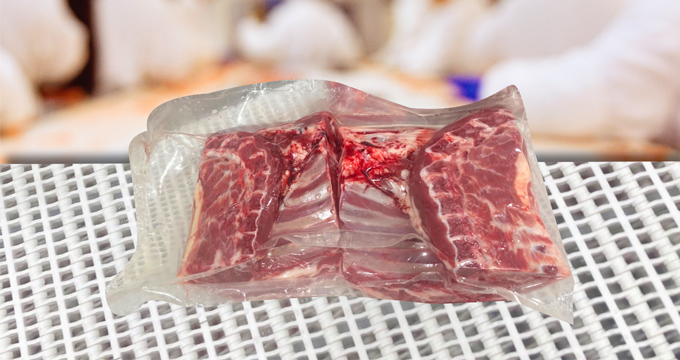
Meat products ending up in landfill
contributes to over 20% of the carbon footprint of total food waste. An
additional issue for meat products is leaking packs which causes unnecessary
food and water wastage. Product sent from Junee Lamb were arriving damaged at
the next point in the supply chain and non-conformance reports indicated that
lamb packaged in previous shrink bags were failing and yielding food waste in
the order of 4,300kg per week. The significant volume of water required to
produce the defective product was also being wasted in the previous packs. The
move to CRYOVAC TBG put an end to leaking packs, food and water waste for Junee
Lamb.
The vacuum shrink barrier bags are designed
to provide a significant shelf life of 90 days. This is particularly important
for the export market where long chilled shelf life is required. The design
provides tough puncture, tear and abrasion resistance, high oxygen barrier
properties, with built-in bone guard protection in areas that need it most. By
identifying the areas of the bag at risk of puncture/abuse (based on cut
packaged), bone guard can be purposefully positioned on the bag to protect
these areas. The 150um bone guard patch ensures the efficient use of materials
while delivering maximum protection and shelf life. The lamb will better
withstand the rigours of production, storage, and distribution and that also
means less waste. In this B2B application, multiple (up to six) meat cuts are
packed into CRYOVAC TBG vacuum shrink barrier bags driving better product:
packaging ratio and decreasing the amount of packaging used. The bag is
Australasian Recycling Logo (ARL) compliant and recyclable through soft
plastics collection programs.
Edgell Supa Crunch (Simplot Australia) for
Food Service
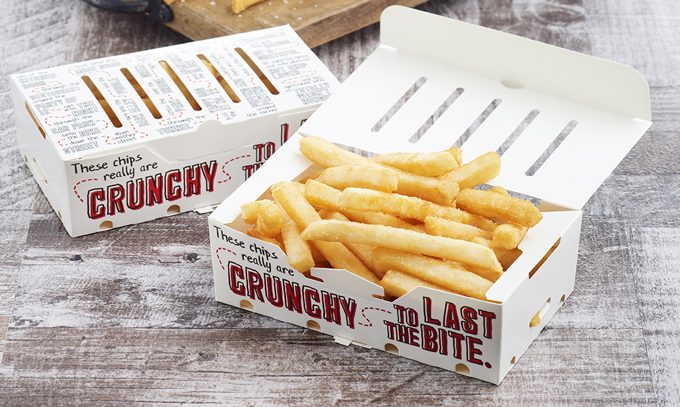
To meet the needs of the Foodservice
channel, Simplot developed Edgell Supa crunch, a new chip designed to stay
crunchy for up to 40 minutes throughout the challenging delivery process.
To complement and aid maintaining the crunch
during delivery, Simplot designed an innovative and sustainable pack that has a
raised and ventilated floor and just the right amount of ventilation on the
sides and top to allow steam condensate to escape while retaining heat.
This pack utilises the stack effect where
air is drawn into the carton at the base and then vents at the top of the
carton allowing moisture filled air from the chips to rise and escape. The
relatively shallow carton is designed to allow the chips to spread out, so they
are not on top of one another. The one-way venting that the stack effect
promotes works well in balancing heat retention and moisture escaping,
promoting quality for food delivery.
The product has instructions on the pack as
to how to use it, and how to effectively extend the life of the chips to keep
hot and crispy and therefore not wasted. This product has been designed to
extend the life of the product through keeping the product crispy and hot. If
the customer finds that the product has cooled too much the packaging has been
designed in a way that it can be reheated in a microwave for 20 seconds which
extends the life of the product reducing the risk of spoilage due to cold soggy
chips.
The pack was designed with tamper evidence
for product security and is stackable allowing for easier distribution of bulk
product and reducing the risk of crushing. The board is fully recyclable, FSC
certified and has been optimised to reduce the amount of board used.
Australian Food Waste strategy
The National Food Waste Strategy
(Australia), that aims to halve all food waste that heads to landfill by 2030, provides
a framework for collective action across the ecosystem. Packaging Technologists
have the opportunity to minimise food waste at the start by incorporating the AIP
Save Food Packaging Design guidelines into their NPD process.
Marketers can spotlight the SFP design
features as a point of difference and send a message to the consumer that the
brand is actively trying to minimise food waste from paddock to plate.
Embedding Save Food Packaging design
features at the NPD stage ultimately reduces the product’s overall
environmental impact at the start of the value chain, which minimises food
wasted in the household.
Thanks Nerida Kelton, Executive Director of
Australian Institute of Packaging (AIP) and WPO Vice President Sustainability
& Save Food, for contributing with this article. For more information,
contact her by e-mail [email protected].
Education
Packaging training programs continue a
total success
In August, WPO
sponsored the training ‘Packaging Design and Development for a Circular
Economy’ organized by its member IOPPK (Institute of Packaging Professionals
Kenya – www.ioppk.com) and supported by another WPO
member, APO (African Packaging Organisation – www.africanpackaging.org). Trainer was WPO
Ambassador, Kishan Singh, and there were 32 participants, including 10 from
Tanzania.
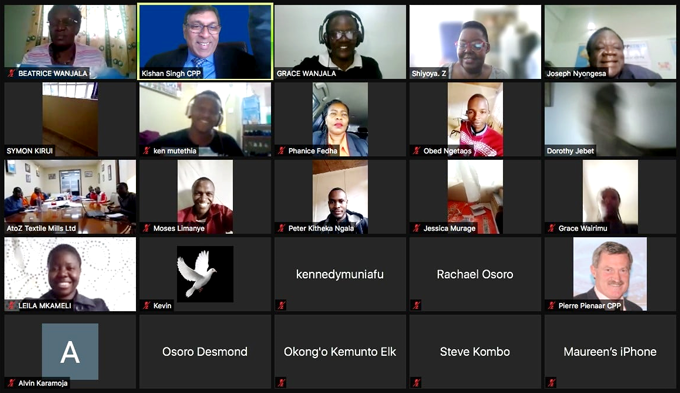
“The theme was chosen because environment
is an important issue in Kenya, particularly because the country is the
headquarters of UNEP (United Nations Environment Programme). The statement that
by 2050 the world will have more plastics in the sea than fish needs an urgent
response. WPO believes in the importance of educational programs on Packaging
Design and Development towards a circular economy and sustainable concepts”,
states WPO President, Pierre Pienaar. He also reminds that Packaging Education
is in the DNA of WPO´s strategy in order to guarantee “Better quality of life
through better packaging for more people „
Besides Kenya, WPO had a busy agenda of
training courses in the second half 2021, that included:
- Indonesia – WPO Masterclass Food &
Pharma Training – August
- Jordan – WPO Regional Packaging Technology
Training – September
- World – WPO Packaging Technology Training –
September
- Georgia – WPO Packaging Technology Training
– early October
The agenda also included a CPP (Certified
Packaging Professionals) Development Education & Training program scheduled
for October 2021. “The idea, in this case, is to train the participants on how
to become a CPP”, explains Henky Wibawa, WPO Vice President Education. CPP is a
certification created and licensed by WPO member in USA, IoPP (Institute of
Packaging Professionals).
For more information on WPO packaging
training programs contact Henky Wibawa by e-mail [email protected].
WorldStar
2022 WorldStar Packaging Awards is
open for entries
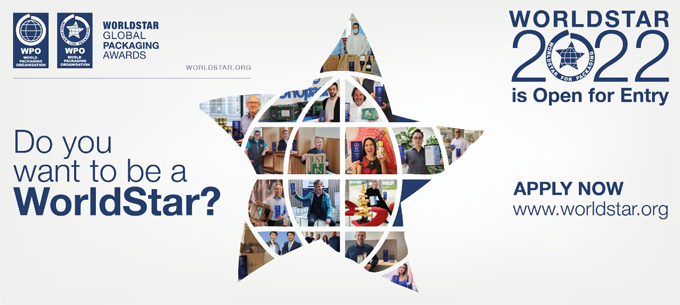
On June 9th, WPO (World Packaging
Organisation – www.worldpackaging.org) organised the
prestigious hybrid WorldStar Ceremony for 2021 winners, with over 250 people
attending, from 53 countries across the globe. The ceremony was co-hosted by
WPO President, Pierre Pienaar and Vice President Sustainability & Save
Food, Nerida Kelton.
During the ceremony, WPO announced 194
winners from 32 countries, including the winners of the Special Categories
(Marketing, Sustainability and Packaging that Saves the Food) and the
prestigious President’s Award. Furthermore, Ralph Moyle, CPP FAIP received the
Lifetime Achievement Award for 2021. The video of the ceremony can be accessed
in the YouTube link https://lnkd.in/dWVVp-G and all the list with
the winners is also available in the webpage www.worldstar.org.
After concluding the remarkable WorldStar
ceremony, WPO is happy to announce that the entries for WorldStar 2022 are open
until October 15, 2021. “We encourage every WPO member across
the globe to help us promote the largest and most prestigious global packaging
award. We are confident that we can even better the number of entries
registered in the 2021 edition: 345 from 35 countries”, states Pierre Pienaar,
WPO President.
Packages eligible for WorldStar are those
that have already received a national or regional packaging award recognised
by WPO. “In its 54th year, WorldStar is one of the major events
of WPO. As always, our aim is to promote packaging innovation in
various areas, proving that a good package can be an essential solution to many
of the modern problems, especially food safety, save food and sustainability”,
adds Pierre.
The schedule for the 2022 edition of
WorldStar Packaging Awards is the following:
- 15 October 2021 Closing date for entries
- November 2021 Judging Process.
- 15 December 2021 Announcements of results
- May 2021 Awards Ceremony and Gala Evening.
For general enquiries on the WorldStar
Packaging Awards contact Soha Atallah, WorldStar Coordinator [email protected] or visit www.worldstar.org.
WorldStar Student
Entries are open for the 2021 edition
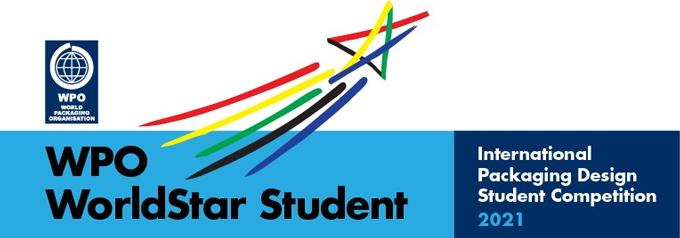
Entries for the WorldStar Student Awards 2021 are open and
close on 1st November 2021. This international student award programme is a key
aspect of the WPO objective of 'Better packaging for more people" by
discovering and attracting talent into the global packaging industry.
The purpose is to expose students to the world of packaging
and the industry at large. Through participation, students tackle projects that
illustrate their potential and test the skills that are required for the art
and science of packaging. Students gain insight into the
role packaging plays in the supply chain and marketing of a product as well as
the benefits and functionality of packaging.
The students eligible to participate are thew ones that have
been awarded in a local competition recognized by WPO. For more details and the
easy on-line entry process go to www.WorldStarStudent.org.
Technical Article
Barriers against migration from food packaging
By Philippe Dubois*

Time and again, "toxic food
packaging" appears in the headlines. Consumers are led to believe that
hazardous substances can migrate from the packaging into the food and thus
endanger health. The Joint Industry Group (JIG) of the WPO member, Swiss Packaging Institute (SVI – www.svi-verpackung.ch)
is working with scientific partners to promote food-safe packaging.
Now the project "Migration into food from
closures of boxes made of recycled cardboard with an internal functional
barrier" has been processed and completed.
The Joint Industry Group on Packaging for Food
Contact (JIG) is an association of companies along the value chain led by SVI.
The players join forces in projects and agree that the migration of undesirable
substances from the packaging into the food must be prevented. This should be
done according to market-based and risk-based criteria.
In the discussion about food-safe packaging,
the terms MOSH and MOAH usually come up. These abbreviations are used to
describe two different groups of chemical compounds that occur in mineral oil.
However, it has not yet been proven whether and in what concentrations these
substances can be hazardous to health.
In a first project of the JIG, the barrier
effectiveness of inner bags in boxes made of recycled cardboard was
investigated. As a result, the "SVI Guideline 2015.01_Inner bags" was
published at the beginning of 2016 and received a great deal of attention
throughout Europe.
In the summer of 2015, SVI launched the project
"Barrier Coating for Recycled Cardboard" with the submission and
testing of test materials from various international companies. Nine European
companies supported the project financially and with test materials. A
measurement method was developed under the direction of the Zurich Cantonal
Laboratory. The tests were carried out in Zurich as well as at the
Papiertechnische Stiftung PTS in Heidenau, Germany.
In this project, the effectiveness of barrier
solutions on recycled board through the gas phase was considered. The first
results of the submitted test materials were presented to the project funders
on May 25, 2016. The findings obtained from the first project phase showed that
the developed measurement method needed to be further adapted and developed.
The second phase of the project was
characterized by the investigation of migration through the closures of the
boxes. The development of a measurement method, as well as the requirement that
the migration of all non-evaluated substances from recycled paperboard into
food be below the 1% limit, was summarized in the document "Migration into
food from closures of boxes made of recycled paperboard with an internal
functional barrier." The report was published in the journal:
"Packaging Technology and Science" on June 23, 2021.
In most cases, it concerns the contamination
of food by mineral oils, one of the groups of substances capable of migration.
These can enter the food at various stages of production, with waste paper or
recycled cardboard packaging being one of the main sources of migration into
the food.
The projects mentioned above therefore focused
on the use of barriers in recycled cardboard. With the requirement to
increasingly use recycled plastics in food packaging in the future, new exciting
projects are opening up for the JIG.
*Philippe Dubois is President of the SVI and
Head of the JIG. For more information, contact him by e-mail [email protected].
Technical Article
Microplastics are not a packaging problem
By Philippe Dubois*

Microplastics have been the talk of the town
for a few years now and - as always - packaging is one of the main culprits for
tendentious media and the uninformed public. The Swiss Packaging Institute (SVI
– www.svi-verpackung.ch), a WPO member, briefly
summarizes the known facts here: they show that microplastics are not a
packaging problem.
Since 2015, when the German Federal
Environment Agency warned of "risks to the environment and water bodies
from the use of plastic particles in skin creams, peelings, shower gels and
shampoos", microplastics have increasingly come under the scrutiny of the
media and the public.
Some so-called quality media and various
dubious environmental protection organizations, in their typical
anti-reflection, initially blamed it primarily on gelittered packaging. Today,
based on numerous serious scientific studies and assessments, we have long
known that packaging has practically nothing to do with the problem of
microplastics. Nevertheless, decades of packaging bashing have apparently left
ineradicable notions in the minds of certain journalists and environmentalists.
What is microplastic?
Microplastics are small plastic particles less
than 5 mm (5000 µm) in diameter. A very small proportion of microplastic
particles are produced directly for use and are added as fillers to cosmetics
or toothpaste, for example, and are also used in baby diapers. By far the
largest proportion of microplastic particles, however, is produced by the
decomposition of plastic products or by the decomposition of plastic waste from
households and industry.
How much microplastic ends up in the
environment?
A 2020 study by EBP Schweiz AG commissioned by
the Federal Office for the Environment (FOEN) does not give a specific total
quantity for plastic particles under 5 mm for Switzerland. From a 2018
Fraunhofer Institute study for Germany, about 33,000 tons of plastic particles
under 5 mm can be extrapolated as the annual Swiss emission amount. In 2014,
the EPF Lausanne determined about 91,000 microplastic particles per sq km of
surface in Swiss waters. According to Pro Natura, more recent extrapolations of
water samples have shown that there are 8133 billion microplastic particles in
Lake Zurich. In the Rhine near Basel, more than 200,000 microplastic particles
are said to float per sq km of water surface.
How dangerous is microplastic?
Currently, there is no completed scientific
study of the health risks of microplastic particles for humans. Research is
also in its infancy when it comes to the impact of microplastics on flora and
fauna. In 2019, the Australian University of Newcastle published a shocking
extrapolation from 51 global studies: according to this, a person ingests five
grams of microplastics per week, primarily through food. This is equivalent to
the weight of a credit card. However, there are major regional differences. The
highest levels are found in the USA and Asia. An average value for Switzerland
cannot be derived from the study. How much microplastic a person ingests
depends on where they live, their living conditions and their diet.
Where does microplastic come from?
It is now clear that microplastics originate
to the very smallest extent from packaging. Most microplastics come from
completely different sources, as the FOEN study from 2020 shows: tire abrasion
is by far the largest source in terms of volume. The tire abrasion released
annually is estimated at around 10,700 t for Switzerland.
From sports fields and playgrounds (e.g.
artificial turf), 1120 t of microplastics are released annually via drainage
and resuspension. Around 1000 t of microplastics are generated during the
construction and demolition of buildings, and a further 320 t or so through the
weathering of building facades. In addition to tire abrasion, Swiss roads
contribute around 930 t of shoe sole abrasion, 770 t of road marking abrasion
and 330 t of abrasion from sweeping machines. Washing synthetic textiles also
accounts for a significant proportion: around 650 t of microplastic fibers
enter the wastewater from Swiss washing machines.
The total abrasion from industrial machines is
around 420 t and the abrasion from cleaning plastics is around 200 t. Finally,
so-called littering introduces around 2700 t of macro- and microplastics into
soils and water bodies every year. This mainly includes disposable tableware
and agricultural film, but also packaging. It is not known exactly what
proportion is attributable to packaging. Incidentally, cosmetics only account
for around 15-20 t per year.
Can microplastics in food and cosmetics come
from packaging?
No, basically not. There is practically no
migratable free microplastic in the inner walls of packaging. At most, it is
possible that consumers ingest plastic particles, for example, by extremely
scraping out plastic cups with a knife. There is no risk whatsoever when
packaging is emptied normally. If food and cosmetics are indeed contaminated
with microplastics, then the microplastics originate exclusively from the
filling material.
Conclusion
Microplastics in the environment are a
problem, but their impact on humans, flora and fauna cannot yet be clearly
named and quantified. It is clear that only a very small proportion of the
amount of microplastics released into the Swiss environment each year comes
from littered packaging. And it is also clear that the amount of microplastic
ingested by humans every day does not come from the packaging, but from the
filling material, i.e. from contaminated food and cosmetics.
*Philippe Dubois is President of the SVI and
Head of the JIG. For more information, contact him by e-mail [email protected].
Special Article
Why ‘Smart Packaging’?
By Shruti Parikh*

WPO Corporate Partner, Takeda is a
patient-focused, values-based, R&D-driven global biopharmaceutical company
committed to bringing ‘Better Health and a Brighter Future’ to people
worldwide. Our passion and pursuit of potentially life-changing treatments for
patients are deeply rooted in over 240 years of distinguished history in Japan.
We are committed to bringing better health and a brighter future to patients by
translating science into highly innovative medicines. Our R&D efforts
are focused on four therapeutic areas: Oncology, Rare Diseases, Neuroscience
and Gastroenterology.
The packaging is an essential component for
better product experience and in pharmaceutical industry as it is the first
interface of a brand with the patient. By creating smarter packaging,
brands are able to engage their patients digitally in a new and innovative way
while also promoting adherence. Smart packaging refers to the package that
links the physical world with the digital world, connecting pharmacies,
manufacturers, patients and digital channels. By utilizing new technologies to
become more than just a mere container, allows packages to be more
communicative, dynamic, individualized, and actualized.
Smart Packaging is an umbrella term that
could be used to describe different types of packaging - active packaging and
intelligent packaging. Active packaging focuses on enhancing functionality,
while intelligent packaging puts the focus on communication such as the
packaged content’s status, or other messaging. Broadly, we can classify smart
packaging benefits in three categories: Patient Experience, Product Integrity
and Sustainability.
Patient experience
Last year changed how people experience and
get hold of products and services. The way we get hold of things changed in
2020, and it's becoming more important to deliver positive experience right
through to the last moment. User expectations are driving a number of important
and pressing challenges that pharmaceutical brands need to address. They
include how to get value from existing assets, how to play in the ecosystem
with other business-to-business players, how to deliver an experience to
establish connect with the patient.
Put simply, smart packaging is all about
the end-user and enhancing their experience with a brand and
product. Smart technology offers brands more avenues to stay connected to patients,
to supply more information to patients and HCPs (Health Care Practitioners),
and to keep them engaged with the brand. But it is simply a way of
enhanced communication. If we think about regular product packaging, there’s a
finite amount of space available. Most is given over to key brand details and
product information. This leaves little room to dedicate to content that
deepens your end-users relationship with the brand.
This is a missed opportunity, given that
product packaging garners some of the highest levels of end-user
engagement. 71% of end-users want product packaging to provide
information that’s honest and transparent, so extending the amount of available
space is the key to fostering brand trust.
Digital interface opens various
opportunities for brands, for example:
- Dynamic information sharing: Smart
technology can increase patient engagement by offering a wealth of user
content. Customize information for smaller groups per their language, cultural
or social setup.
- Multimedia sharing: If a picture is worth a
thousand words, imagine the worth of a video! Providing instructions of use,
end of life or reuse instructions through videos has higher recall and
retainability in a user’s mind.
Product integrity
Smart packaging is a game-changer in
product integrity. Instead of a product being scanned at each checkpoint, the
packaging becomes the source of the data. Intelligent applications can extend
shelf life, improve safety, and optimize communication. Simplified inspections,
for example, with a NFC data logger that monitors temperature and freshness
during transport, can increase the product quality, reduce waste, and improve
safety allowing producers to save tremendous time and costs. Additionally,
brands have access to real-time data at any time, from any place and reducing
any risk of losing the product.
In pharmaceutical industry drug products
need to be transported and delivered under strict environmental conditions and
even though providers make use of data loggers, this kind of information cannot
be available in real-time. Smart packages can monitor the condition of a product
and notify whether it is good or compromised using advanced indicators and
sensors, offering providers easy access to quality control.
Sustainability
As sustainability has become integral to
packaging it is necessary that smart packaging designs do align with this
trend. In many ways, useful application of smart packaging is helping the
environment. With smart technology able to detect whether certain drugs are
still safe to use, it could extend the shelf life of a product, reducing drug waste
and providing greater efficiency in the supply chain.
Not only that, embedded information could
also provide the patient with detailed information about how the packaging can
be recycled and even directions to the nearest recycling center.
Packaging is much more than just protecting
the product or displaying static information–it’s an opportunity to create
interactive experiences then enhance product quality and grow brand
rapport. As competition in the industry heats up after the pandemic, it’s
safe to say that the winners are going to be those who take advantage of
emerging technologies to give themselves an edge in a saturated market.
 *Shruti Parikh is the Packaging Design Lead
of Takeda Pharmaceuticals (www.takeda.com) based
out of Massachusetts, USA, steering Packaging Design, Sustainable Design and
Patient Engagement Interaction Design capabilities globally. Shruti’s innovation in packaging comes
through the establishment of human factors processes and by employing
user-centered design principles and practices. This approach, in collaboration
with stakeholders, contributes to the creation of value adding solutions and
services that mitigate product misuse, reduce user variability, and enable
better user experiences. *Shruti Parikh is the Packaging Design Lead
of Takeda Pharmaceuticals (www.takeda.com) based
out of Massachusetts, USA, steering Packaging Design, Sustainable Design and
Patient Engagement Interaction Design capabilities globally. Shruti’s innovation in packaging comes
through the establishment of human factors processes and by employing
user-centered design principles and practices. This approach, in collaboration
with stakeholders, contributes to the creation of value adding solutions and
services that mitigate product misuse, reduce user variability, and enable
better user experiences.
For more information on this issue, visit:
News from Corporate Partner
‘Rethinking plastics’, a video that you should watch!
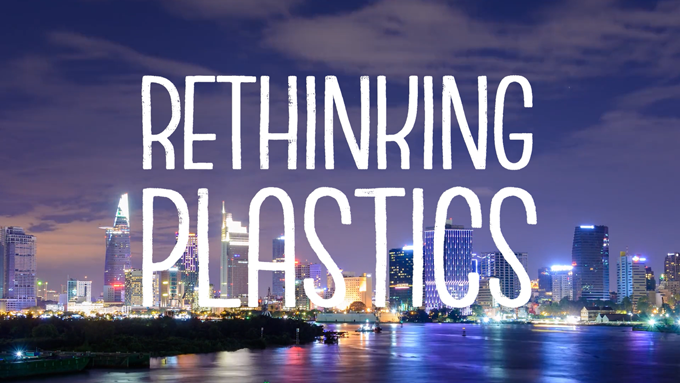
Recently WPO Corporate Partner, BioLogiQ (www.biologiq.com), launched a video in Linked In - https://lnkd.in/dPkEDBYb –
that invite the audience to ‘rethinking plastics’.
The video proposes clear priorities for more eco-friendly plastics:
- (1) plastics should be made from plastics… with a minor portion being made from
renewable feedstocks (mostly to make up for recycling losses);
- (2) plastics should incorporate a “safety mechanism” compatible with nature’s
biodegradation systems in the event they escape recycling and waste management
infrastructures.
While that perfect plastic is yet to be invented, BioLogiQ presents NuPlastiQ
as a “sustainability upgrade” to mainstream PE, PP and PS and bringing them one
step closer to that vision: durable (no accelerated fragmentation), recyclable
and yet more biodegradable, and the most important: available today.
The video also displays, in-depth, recyclability studies demonstrating that,
like paper, it is possible to aspire to have more biodegradable plastics
without disrupting recycling. It also shows some recyclability studies and its
results.
BioLogiQ also believes in a communication program that will enable brands to:
- (a) tell consumers they are utilizing an innovative plant based plastic (with a
label) - packaging level;
- (b) explain that the innovative plant-based plastic has demonstrated potential
for reduced environmental pollution while remaining durable for most uses, making it clear that increased biodegradation does NOT
mean a license to litter. Top priorities continue to be the 3Rs and improved
infrastructure. (partner website).
BioLogiQ is by no means claiming that NuPlastiQ makes PE/PP/PS “perfect”, but
it is a significant step forward. Most importantly: it spearheads the vision of
durable + recyclable + more biodegradable plastics.
For more information about BioLogiQ and its products,
contact Bruno Pereira, Chief Sustainability Officer, by e-mail [email protected].
News from Corporate Partner
Know more about Trayak and the EcoImpact-COMPASS, a life
cycle assessment tool for products and packaging
The new WPO Corporate Partner, Trayak (www.Trayak.com) is a software solutions and consulting company
headquartered in the United States. It provides the leading life cycle
assessment (LCA) tool for products and packaging, EcoImpact-COMPASS, to
a broad range of clients as they embark on their sustainability journeys.
Trayak mission is defined as “to equip our customers with
easy-to-use tools that can be embedded comfortably into their mainstream
development, manufacturing, and launch processes”. And the vision is that all
companies will design and manufacture their portfolios using sustainable strategies
and data-driven analysis.

The name Trayak is loosely defined from Sanskrit as ‘The
Protector’ and this concept is what motivates the commitment to apply LCA,
goal-setting, and cutting-edge design strategies directly into the workflow of
manufacturers and brands across the world. “We strive to protect the earth by
empowering our clients to integrate sustainability into the entire life cycle
of their products and packaging from cradle to grave - through design, materials, manufacturing,
transportation, use, and disposal”, states the company.
This is achieved with tools and expertise to reduce the
environmental impact of companies, pursue stronger sustainability goals,
and better understand the operational tradeoffs that come with design change
using the unique add-on module, SCORE.
Trayak flagship LCA tool, EcoImpact-COMPASS, was initially
developed by the Sustainable Packaging Coalition (SPC) in a collaborative
process with packaging experts, stakeholders, life cycle assessment
professionals, and academia. The life cycle assessment tool sets the industry
standard and is endorsed by organizations such as the Australian Packaging Covenant Organisation,
Packaging Europe, and Walmart's Project Gigaton.
EcoImpact-COMPASS is now fully owned and operated by Trayak
and is a powerful yet user-friendly tool with improvements such as:
- new datasets with specialized packaging materials
and conversion processes;
- integrations into CAD, PLM, ERP, and Spec Management
Systems;
- SCORE module to visualize operational requirements;
- cloud-based software requires no downloads;
- dashboard analytics and simple indicators for easy
reporting.
The company´s goal is to show that implementing sustainable
practices, into a current manufacturing and design process, is not as difficult
as it may seem. Trayak also strives to innovate in the field of life cycle
assessment and product and packaging design while being attentive of the global
context.
For more information, contact Nathan Mckee, Sustainability Analyst, by e-mail [email protected].
|
